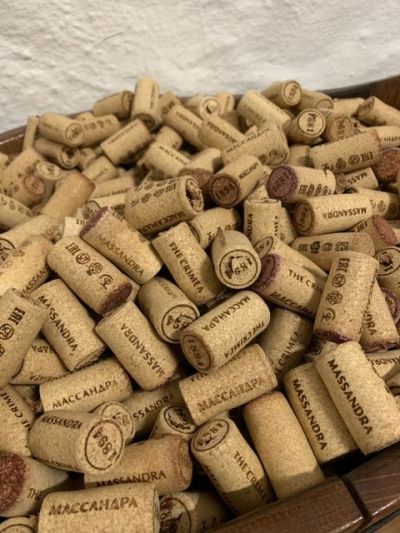
RUSSIA – In ancient times, when wine was stored in amphorae, skins and tissues were used that had been treated beforehand with oils and fats, but these altered the quality of the wine.
Around the 5th century BC, the Greeks began using corks as stoppers, and by the 17th century, with the proliferation of glass containers, corks had been adopted as the standard closure.
Jean Leon said that Spain’s neighbor, Portugal is the world’s leading cork producer. It produces nearly 50{449fde34b18ca6505a303acf59cd2914251092e879039fa6b1605563bfad8ebc} of the world’s production, while Spain contributes 25{449fde34b18ca6505a303acf59cd2914251092e879039fa6b1605563bfad8ebc} of the total. The rest comes from southern Europe (France and Italy) and northern Africa (Algeria and Morocco).
Cork is extracted from the bark of a variety of oak tree, Quercus suber, which has the ability to continuously regenerate its light, spongy bark. Trees must be at least 40 years old before the first extraction takes place, although it is recommended to wait another 15 years to achieve the ideal material for industrial uses.
Manually. Electric saws are only used for the thickest parts. The bark is extracted from the trunk and the strongest branches, and this has to be done very carefully to avoid damaging the internal bark. If it is damaged, the tree will not regrow and will end up dying.
Drying. The planks of bark have to spend two or three days drying in the sun. Once dry, they are boiled to disinfect them and remove any impurities. This is when the cork swells and gets its definitive elasticity.
After resting for two or three weeks, the planks are graded into classes according to their quality, which is determined by their thickness, porosity, and appearance. The next step is cutting. A size is determined, normally a little wider than the length of the stopper that is going to be manufactured, and strips of this size are cut from the planks.
Once the planks have been cut, it is time for the punching. This is done using a hollow drill bit, and the result is a cylindrical stopper. The desired size will depend on the type of stopper that is going to be made.
The resultant stopper is washed again to ensure does not contain any kind of impurity. Once clean, it is stamped with the usual markings we always see: vintage, logo, or any other information as desired. The printing is done with ink or fire, although the parts that are in contact with the wine are never marked with ink, heat is always used in this case.
After bottling and closure, a capsule is added to most bottles of wine in order to better protect it. These capsules are usually plastic or a lead-tin alloy.
It is interesting to note that there are different kinds of cork closures. The nine used most frequently appear in this article from Vinopack.
As you can see, the cork stopper manufacturing process is pure craft and all the materials used are of natural origin. It is undoubtedly an essential element for the final quality of the wine and at the same time a key piece for conserving it.



